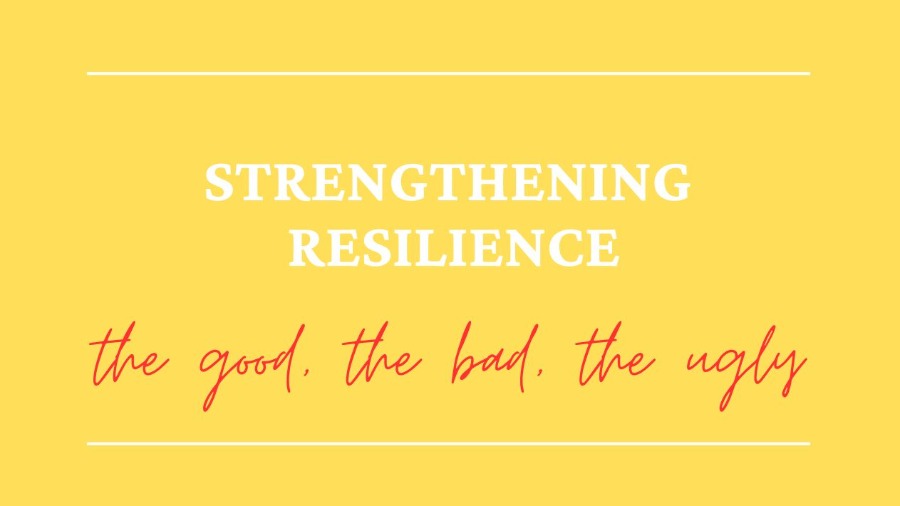Did you navigate the challenges of the Covid pandemic with aplomb? Resilience! “Performing” well at work despite wars, crises, and uncertainty around the world? Resilience! Not among the third of the population that, according to surveys, is so stressed that they feel overwhelmed by the ups and downs of everyday life and work? Resilience! Along with mindfulness, resilience has been elevated to a new “superpower” in recent years.
Resilience is an important topic in coaching as well, whether it’s because clients want to achieve challenging professional goals while staying fit and healthy or because they’re exhausted and irritable and aren’t firing on all cylinders. They wish they could “bounce back” to their original good form – precisely what the Latin word “resilire” means. Resilience is the process through which people adaptably and flexibly react to changes.
Strengthening resilience: the GOOD
Do you have a “resilience role model” in your environment? A person who trusts that their destiny is in their own hands and has a realistic picture of their abilities? Someone who easily shifts gears from tension to relaxation and accepts things that can’t be changed with equanimity?
Has this person been like that since childhood? Quite possibly, because resilience traits are innate to a certain extent. Far from being “tough”, resilient children are good at acting deliberately. They are intelligent, optimistic and are more likely to ask others for help. As adults, they experience ups and downs but tend to react to crises by changing course before things get out of hand.
At the same time, resilience is not just an innate characteristic – “nature”, in other words. Resilience is also a skill and a process that encompasses triggers (stress, crises, trauma), resources (self-esteem, positive outlook on life, supportive social relationships, etc.) and consequences (changes in attitudes or behaviour). This process is not static but dynamic. Resilience is both “nature” and “nurture” – innate AND learnable.[1][2]
And although you can’t completely change yourself or your history, you don’t have to simply accept a lack of resilience. Particularly when the stumbling block is your own beliefs and patterns of thinking. We have much more control over them than we think. They can be made conscious and changed – like a bad habit that can be broken.
Although this little experiment might feel strange at first: for two weeks, try not to let any problems that arise get under your skin. Instead, observe them like a scientist or tinkerer would do: “I acknowledge that you are there. Let’s see what I can come up with to solve you even though some things probably won’t turn out as I expect.” Don’t waffle or see yourself as a victim (“Why is this happening to me of all people?”). After a few days, you’ll probably notice that you’ve got more solutions up your sleeve than MacGyver (three shoelaces, two paper clips, one fuse …) and that focusing on solving problems actually energises you instead of tiring you out.
Strengthening resilience: the BAD
Of course, it’s not quite as simple to boost your resilience as this thought experiment suggests. Beliefs and patterns of thinking that we have, in many cases, “practised” for years can be extremely stubborn. Even when we recognise them, it takes a lot of conscious training to gradually chip away at them. And it is perfectly legitimate to seek help through coaching along the way.
Those who want to train their resilience also have to bear in mind that it’s a complex construction site. If it were a house, it would rest on no fewer than four pillars:
- (Neuro)biology: overall health, neurochemical balance, biological regenerative capacity
- Psychology: mental and emotional strength, personal preferences and motivators, life stage, regenerative capacity
- Social environment: relationships, family/friends, colleagues, life stage of the network
- Physical environment: environment/place of residence, (working) conditions, time and process management skills
The (neuro-)biological dimension in particularly is important: if the balance of neurotransmitters important for tension and relaxation is disturbed, the person is already acutely exhausted or (mentally) ill, medical and/or psychotherapeutic support may also be needed in some cases. If important physical resources are lacking, it is almost impossible to change one’s behaviour, do mindfulness exercises or exercise more.
In any event: resilience is often a lifelong task in which the four pillars must be well maintained and kept in good nick.
Strengthening resilience: the UGLY
Resilience is an individual “superpower”. However, critics rightly see the ubiquitous use of the term as an indication of the tendency to individualise societal risks.[3][4] Health, psychological and physical performance, and feeling stressed are not only dependent on the individual: Some stress factors are exclusively caused or exacerbated by working conditions. There are also problems in which responsibility for a structural problem is shifted to the individual under the fig leaf of “resilience”.
Coaching therefore also takes a critical look at the person’s living and working conditions. Ultimately it can be just as important to put your foot down and say, “That’s it, something’s got to change” instead of “Ok, I am becoming more resilient and tolerate it”. Reflecting on your own motives and needs and expressing them openly creates the space to set boundaries. And an awareness of where clients must actively do something to accomplish what they want to come true.
Are you facing a professional challenge that calls for greater resilience? Learn more about my coaching services or let’s connect and find out how I can help.
[1] Angela Duckworth, Grit: The power of passion and perseverance (TED Talk), 2014.
[2] Harvard Business Manager, The secret to building resilience, 29 January 2021.
[3] Hamideh Mahdiani & Michael Ungar, The dark side of resilience, in: Adversity and Resilience Science, Volume 2, pp. 147–155, 3 February 2021.
[4] Natasha Sholl, We need to stop talking about resilience. I’m not here to inspire you with all the trauma I’ve endured, in: The Guardian, 3 October 2021.

0 Comments